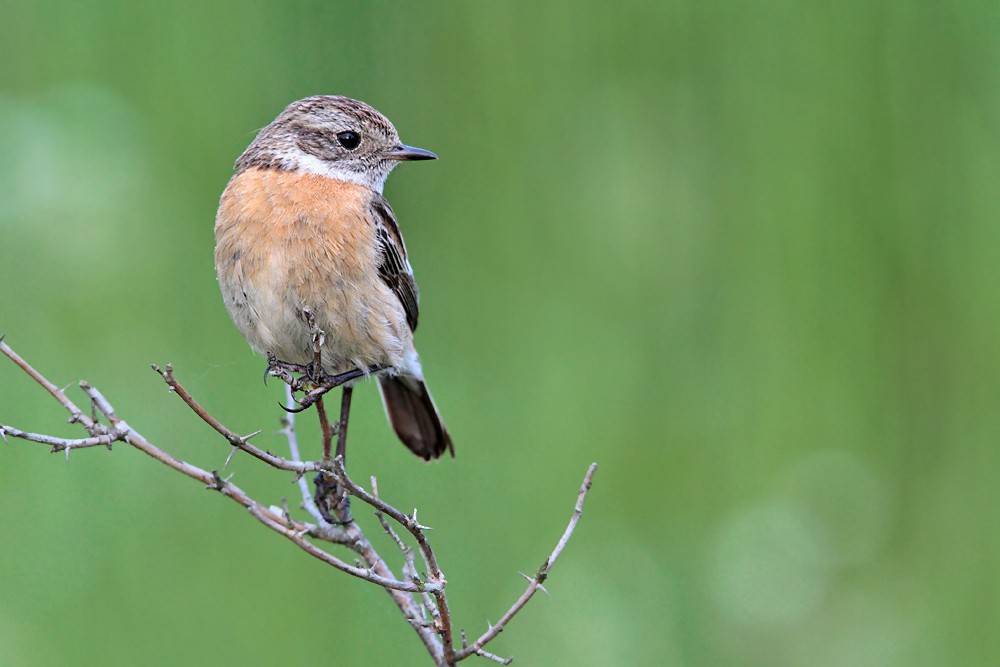European Stonechat
A species of Stonechats and Bush Chats Scientific name : Saxicola rubicola Genus : Stonechats and Bush Chats
European Stonechat, A species of Stonechats and Bush Chats
Botanical name: Saxicola rubicola
Genus: Stonechats and Bush Chats
Content
Description People often ask General Info
 Photo By PeterRohrbeck , used under CC-BY-SA-4.0 /Cropped and compressed from original
Photo By PeterRohrbeck , used under CC-BY-SA-4.0 /Cropped and compressed from original Description
The european Stonechat is a small passerine bird known for its lively, bouncy behavior and loud, musical calls. It has a distinct black head, white collar, and rusty-red breast. It is found in open habitats such as heaths, grasslands, and coastal dunes. It has a unique courtship display called "sky-dancing", where it flies high into the air and dives down while singing. 
Size
13 cm
Life Expectancy
5 years
Nest Placement
Shrub
Feeding Habits
European Stonechat primarily consumes small and medium-sized insects and other invertebrates, foraging actively during the day using a 'perch and pounce' technique. This bird shows a preference for a varied diet, with seasonal adaptations in food choice.
Habitat
The european Stonechat thrives in open landscapes with elements like bushes and low structures. Habitats range from sea-level grasslands to alpine meadows at elevations up to 3000 meters. Widespread in environments such as heathlands, agricultural areas, pinewoods, and marshes with scattered vegetation, the species successfully adapts from coastal to mountainous habitats, favoring areas intermingled with stone walls and scrub.
Dite type
Insectivorous
General Info
Feeding Habits
Bird food type
Sounds
Call
Recording location: Netherlands
Song
Recording location: Netherlands
Song
Recording location: Portugal
Behavior
European stonechats breed in heathland, coastal dunes and rough grassland with scattered small shrubs and bramble, open gorse, tussocks or heather. They are short-distance migrants or non-migratory, with part of the population (particularly from northeastern parts of the range, where winters are colder) moving south to winter further south in Europe and more widely in north Africa. 
Scientific Classification
Phylum
Chordates Class
Birds Order
Perching birds Family
Old world flycatchers Species
European Stonechat